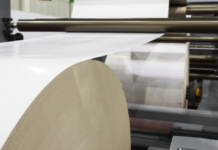Work gloves are there to protect one of our most precious assets – our hands. Hand-related injuries in the workplace can not only be detrimental to quality of life and overall health but can also be very financially costly.
So what versatile and comfortable materials should you look for when choosing work gloves?
1. PVC
When working with chemicals such as acid, commercial solvents, corrosives or fertilisers, it is important to know they can result in serious damage to hands such as burning and staining skin, in addition to having long-term health effects.
There are safety work gloves that are specifically designed for working with chemicals that are manufactured from materials that are resistant to such chemicals. These materials include strong PVC rubber.
PVC rubber work gloves not only protect hands from chemical injuries but also come with breathable liners that ensure hands remain comfortable and cool in conditions that are often uncomfortable and hot.
2. Leather
Leatherwork gloves can be manufactured from pig, deerskin or even thick cow-hide, and offer excellent protection against abrasions and cuts while also being able to withstand very cold temperatures.
There are even some leather work gloves that maintain the suppleness and strength of real leather while still providing superior protection.
Leather gloves are incredibly versatile and perfect for the majority of manual tasks such as fixing machinery, gardening or woodwork. The leather is strong and durable and intended to protect hands from damage by sharp objects and rough surfaces. Some leather gloves may come with an insulated liner, which can be useful for those who work with electricity.
The one downside of leather gloves is that their thickness can compromise dexterity but overall they provide excellent comfort and protection.
3. Fabric gloves
Fabric gloves are manufactured from either synthetic materials or thick cotton blends and come with heavy-duty insulation such as Kevlar or Nomex, which provide a very high resistance to cold and heat and are also flame-resistant.
Such gloves are ideal for those who work in a kitchen environment, when hot dishes or utensils have to be carried or ice handled. Fabric gloves can also be used to handle slippery material as they can increase grip while offering a high level of dexterity.
4. Nitrile
Nitrile is a good alternative to latex gloves for those who are sensitive to latex or just have sensitive skin in general. They have a similar texture and weight to latex gloves and offer the same biohazard protection without allergy concerns.
Some Nitrile work gloves come with additional features that produce rounded, smooth fingertips, improving finger sensitivity, and are ideal for tasks such as working with metal, wood and even electricity.
5. Polyurethane, Glass Fibres and Spandex
Work gloves made from this combination are ideal for working with sharp cutting instruments, offering superior protection from accidental cuts or scrapes. Work gloves made from this material are four times stronger than leather.
Using comfortable and strong work gloves can protect the hands from injuries such as abrasions and cuts from tools in addition to electrical and chemical burns. Many people neglect hand safety, but given that 60% of all hand injuries can be reduced just by wearing safety work gloves, it should be a major priority.









